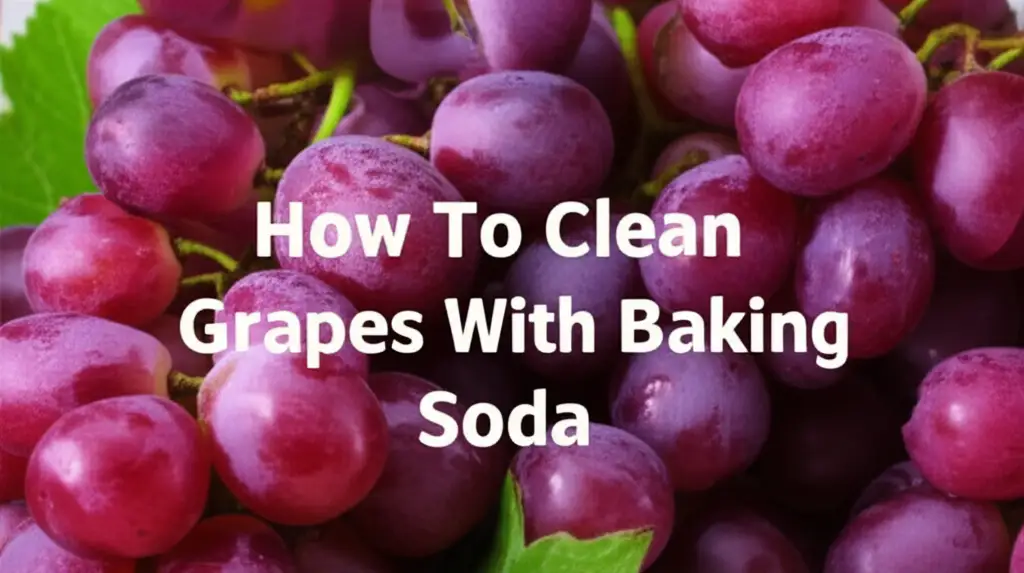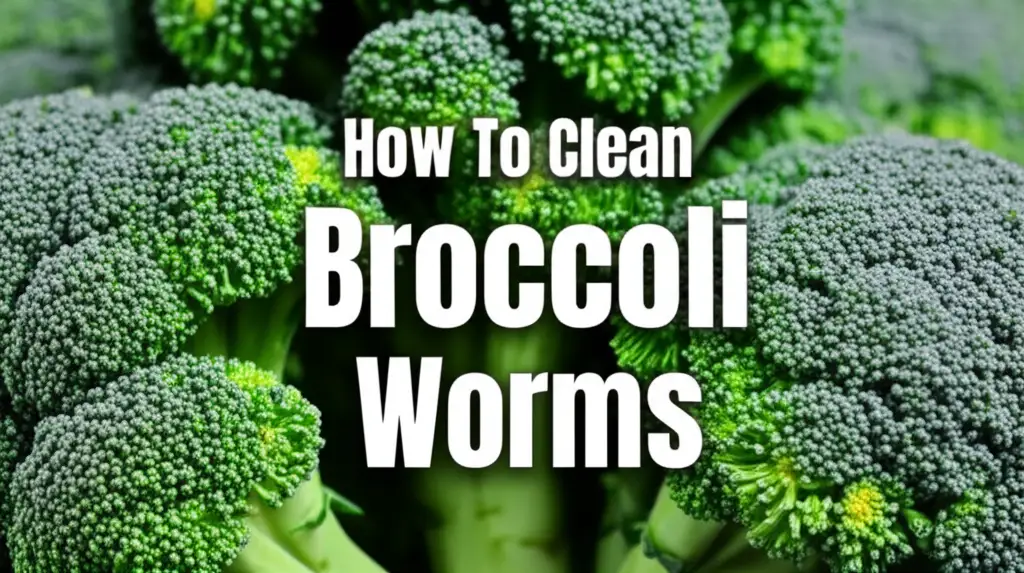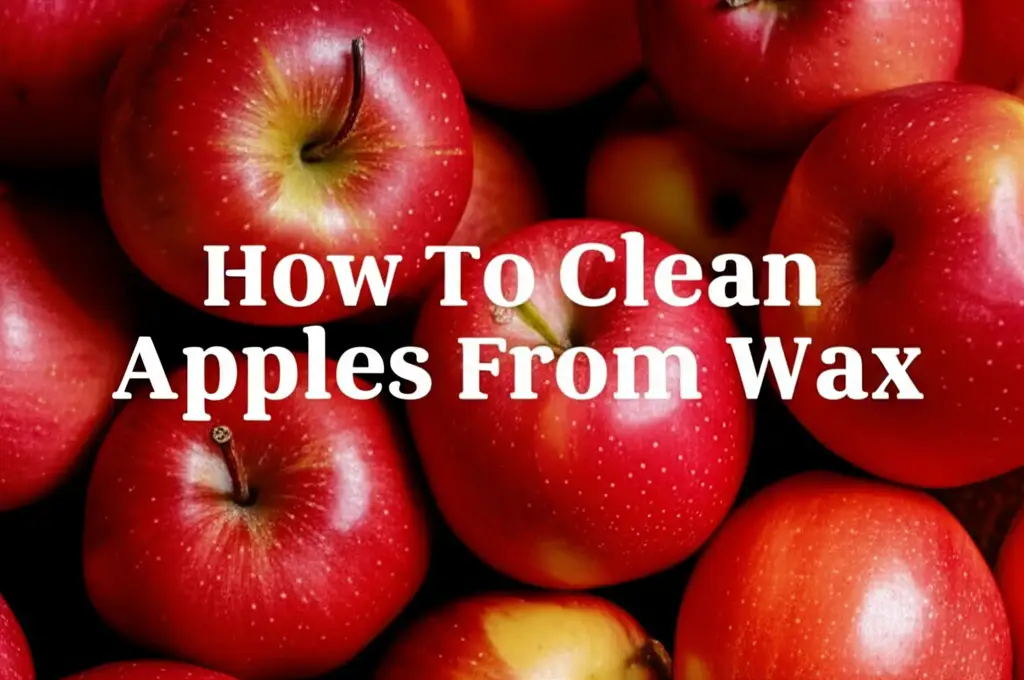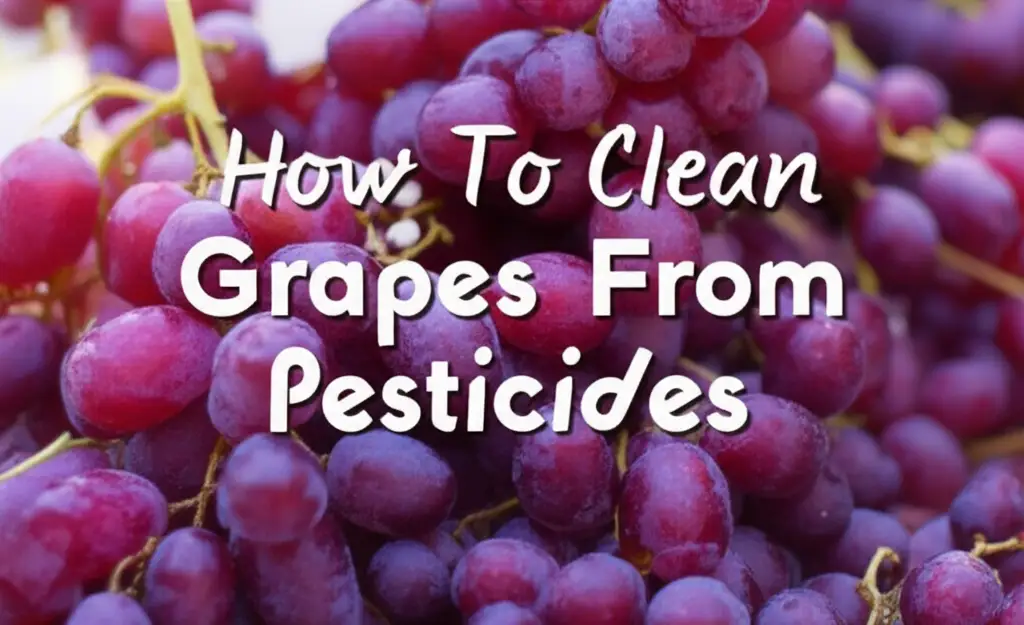· Food Safety · 12 min read
How To Clean Fruits With Baking Soda
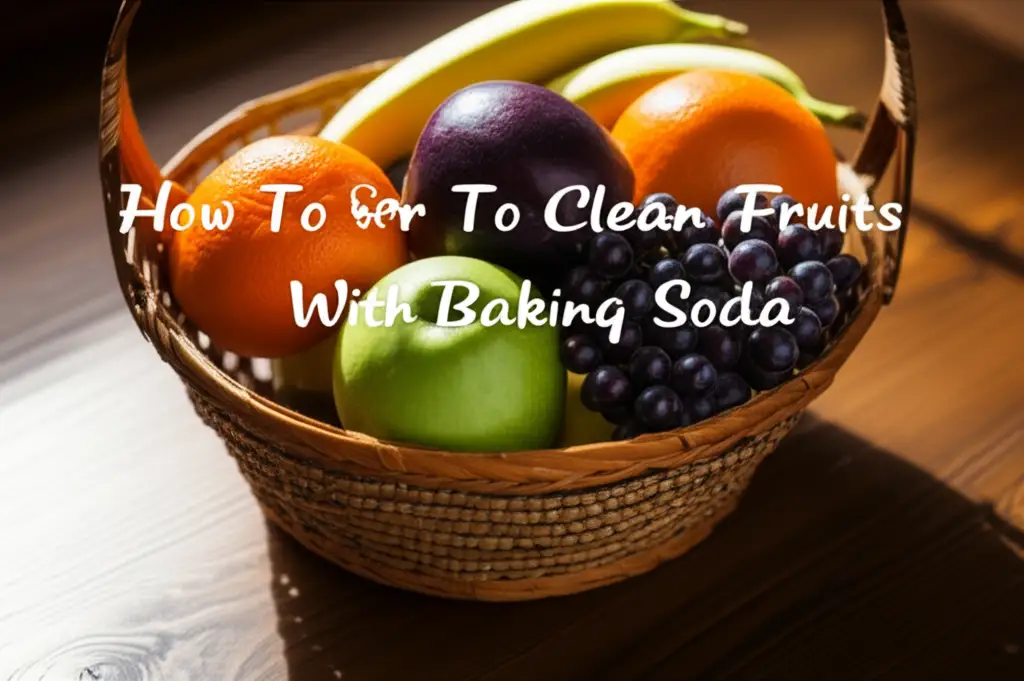
Clean Fruits with Baking Soda: A Smart Choice
Do you ever wonder what is on your fresh fruits? We all want to eat healthy, but fruits often carry more than just vitamins. They can have dirt, wax, and unseen residues like pesticides. Simply rinsing with water may not be enough. This is where baking soda comes in. It offers a simple, effective way to ensure your produce is truly clean.
In this article, we will explore the benefits of using baking soda to clean fruits. I will guide you through the process step-by-step. We will discuss why baking soda works and how it compares to other cleaning methods. You will learn about specific tips for different types of fruits. By the end, you will feel confident in preparing your fruits for a safer, healthier snack. Let’s make your fruits sparkling clean.
Takeaway
- Baking soda effectively removes pesticide residues, dirt, and wax from fruits.
- It is a natural, safe, and cost-effective method for cleaning produce.
- Always rinse fruits thoroughly after a baking soda soak to remove all traces.
To clean fruits with baking soda, dissolve about one teaspoon of baking soda in two cups of water. Soak fruits in this solution for 12-15 minutes. Gently scrub fruits with your hands or a soft brush. Rinse them thoroughly under cold running water before eating or storing.
Why Cleaning Fruits Matters: Beyond Just Dirt
We pick up fresh fruits at the store or market, expecting them to be ready to eat after a quick rinse. However, what we cannot see can harm us. Fruits travel long distances and pass through many hands. They can pick up a lot of things along the way. This includes visible dirt, invisible bacteria, and even pesticide residues. It is important to clean fruits properly for our health.
Pesticides are chemicals used to protect crops from pests. While regulated, residues can remain on the fruit’s surface. These residues can be harmful if consumed over time. You also have to think about dirt and germs. Imagine all the places a fruit touches before it reaches your home. Thorough cleaning helps remove these unwanted guests. Wax coatings are also common on fruits like apples. These waxes can trap dirt and residues. Cleaning helps get rid of these layers. We want our food to be safe and nourishing.
The Power of Baking Soda: A Natural Fruit Cleaner
Baking soda, scientifically known as sodium bicarbonate, is a common household item. People use it for baking, cleaning, and even deodorizing. But its power goes beyond these everyday uses. It is also an excellent agent for cleaning fruits. Many studies show its effectiveness in removing surface contaminants. This makes it a great choice for your kitchen.
Baking soda works in a few ways. First, it is mildly abrasive. This helps to gently scrub away dirt and wax without damaging the fruit’s skin. Second, its alkaline nature helps to break down acidic compounds. Many pesticide residues are acidic. This breakdown makes it easier to wash them away. Third, it is completely food-safe. You do not need to worry about harsh chemicals. It leaves no harmful residue when rinsed properly. Using baking soda helps ensure your fruits are clean and ready to eat. For other cleaning needs, baking soda often pairs well with other common ingredients. For example, learning how to clean with vinegar and baking soda can address many household messes.
Step-by-Step Guide to Cleaning Fruits with Baking Soda
Cleaning your fruits with baking soda is a simple process. It does not require any special tools or ingredients. You likely already have everything you need in your pantry. Follow these steps to ensure your produce is sparkling clean and safe to eat. This method is gentle yet effective, making it suitable for most types of fruits. I find this routine easy to fit into my busy day.
Prepare the Soaking Solution
First, get a large bowl. Make sure it is clean. Add water to the bowl. The amount of water depends on how many fruits you plan to clean. A good ratio is one teaspoon of baking soda for every two cups of water. For a standard sink full of water, you might use 3-4 tablespoons of baking soda. Stir the water well until the baking soda dissolves completely. You want an even solution to get the best results.
Soak the Fruits
Gently place your fruits into the baking soda solution. Make sure they are fully submerged. If some fruits float, you can use a plate or a smaller bowl to keep them under the water. The soaking time is important. For effective cleaning, let the fruits soak for 12 to 15 minutes. This allows the baking soda to work on breaking down residues. I usually set a timer for this step.
Gentle Scrub and Rinse
After soaking, remove the fruits from the solution. For fruits with firmer skins, like apples or pears, you can gently scrub them. Use a soft brush or your hands. This helps to dislodge any remaining dirt or wax. For softer fruits, like how to clean strawberries with baking soda or how to clean blueberries with baking soda, simply handle them with care. Do not scrub too hard. Finally, rinse all the fruits thoroughly under cold running water. Ensure all traces of the baking soda solution are gone. This final rinse is crucial.
Cleaning Specific Fruits: Tips for Different Textures
Not all fruits are the same. Their skins vary in thickness, texture, and delicacy. This means your cleaning approach might need slight adjustments. While the baking soda method works for most, considering the fruit type helps achieve the best clean. I always think about the fruit’s skin when I clean it.
Hard-Skinned Fruits
Apples, pears, and citrus fruits have firm skins. They can handle a more rigorous cleaning. After soaking in the baking soda solution, use a soft bristled brush. Gently scrub the surface. This helps remove wax and dirt from crevices. Rinse thoroughly under running water.
Soft-Skinned Fruits and Berries
Berries like strawberries, blueberries, and raspberries are delicate. They absorb water quickly. Prolonged soaking can make them mushy. For these, reduce the soaking time to 5-10 minutes. Do not scrub them. Instead, gently swirl them in the solution. Rinse them quickly and thoroughly under cool, not cold, running water. Be gentle to avoid bruising.
Grapes and Other Clustered Fruits
Grapes grow in clusters, making them harder to clean individually. Cut them into smaller clusters first. This allows the baking soda solution to reach all surfaces. Soak them for about 10-12 minutes. Swirl them gently in the water. Rinse very well under running water. Ensure no solution remains trapped in the clusters. Handling them carefully prevents damage.
Baking Soda vs. Other Cleaning Methods
When it comes to cleaning fruits, you have options. Many people simply rinse with water. Others use commercial produce washes or even vinegar. It is helpful to understand how baking soda compares. Each method has its pros and cons. I have tried many methods over the years.
Water-Only Rinse
Rinsing fruits with plain water is a good first step. It removes loose dirt and some surface contaminants. However, studies show water alone is not very effective. It does not significantly reduce pesticide residues or wax coatings. It is a quick method, but it leaves much to be desired. This method should be a minimum, not the only step.
Commercial Produce Washes
Grocery stores sell special produce washes. These often claim to remove pesticides and waxes more effectively. While some may work, they can be expensive. Their ingredients are also not always clear. Some may leave a residue if not rinsed properly. They might contain chemicals you prefer to avoid. Baking soda is a natural and transparent alternative.
Vinegar Solutions
Vinegar is another popular natural cleaner. It is acidic, which helps kill some bacteria. A solution of 1 part vinegar to 3 parts water is often suggested. While vinegar can be effective against certain microbes, its ability to remove pesticides is debated. It also leaves a distinct smell and taste if not rinsed very well. Some people dislike the vinegar smell on their fruits. For general household cleaning, how to clean with vinegar and baking soda is a popular combination for tackling tough messes, but for fruits, baking soda often wins for taste neutrality.
The Baking Soda Advantage
Baking soda stands out for several reasons. It is inexpensive and widely available. It effectively removes pesticides and wax, backed by scientific studies. It is non-toxic and leaves no taste or smell when rinsed. It is also gentle on fruits. This makes it a superior choice for daily fruit cleaning. Baking soda is versatile; for example, it is also effective for general cleaning tasks like learning how to clean a washing machine with baking soda and vinegar.
Safety and Storage After Cleaning Fruits
Cleaning your fruits properly is only half the battle. How you handle and store them afterwards also matters. Improper storage can lead to bacterial growth or spoilage. This defeats the purpose of thorough cleaning. I always make sure to follow these post-cleaning steps to keep my produce fresh and safe.
Drying is Essential
After rinsing, it is very important to dry your fruits. Excess moisture promotes bacterial growth and spoilage. Use a clean paper towel or a soft cloth to gently pat them dry. For berries, you can spread them in a single layer on a clean towel. Let them air dry for a bit before storing. This step adds a few minutes but saves your fruits from premature decay.
Proper Storage Methods
Once dry, store your fruits in the refrigerator. Use clean containers or produce bags. Do not store them in the same packaging they came in, especially if it was wet. Keep washed fruits separate from unwashed fruits. This prevents cross-contamination. Some fruits, like bananas, are better stored at room temperature until ripe. Wash them just before eating.
Wash Just Before Eating
Washing fruits just before you eat them is a good practice. Pre-washing and storing can reduce their shelf life. The moisture from washing can create a breeding ground for bacteria. It also makes some fruits spoil faster. If you must pre-wash for convenience, make sure they are completely dry before storage. This helps them last longer. This practice ensures peak freshness and safety.
Common Misconceptions and Additional Tips
There are many beliefs about cleaning produce. Some are true, some are not. It is helpful to clear up common misconceptions. I want to share some additional tips to make your fruit cleaning routine even better. Knowing these details helps you make informed choices.
Misconception 1: “Organic Fruits Do Not Need Washing”
This is false. Organic fruits are grown without synthetic pesticides. However, they are still exposed to dirt, bacteria, and natural pesticides. Animals, dust, and handling can contaminate them. All fruits, organic or not, need proper cleaning. Treat them with the same care.
Misconception 2: “Dish Soap is Safe for Fruits”
This is not true. Dish soap is designed for dishes, not food. It can leave a residue on fruits. This residue is not meant for consumption. It can cause stomach upset. Always stick to food-safe cleaning methods like baking soda or plain water. Avoid using any soap or detergent.
Tip 1: Clean Your Sink and Tools
Before you start, ensure your sink and any bowls are clean. Use hot, soapy water to wash them. Rinse them well. This prevents transferring germs from your cleaning area to your fresh produce. Cleanliness starts with your workspace.
Tip 2: Use Cold Water for Rinsing
Always use cold water for the final rinse. Cold water helps keep the fruits crisp. It also helps prevent bacteria from multiplying on the surface. Warm water can encourage bacteria growth. This is a small detail that makes a difference.
Tip 3: Do Not Wash Fruits Too Far in Advance
As discussed, washing fruits too early can shorten their shelf life. It can also encourage mold. Try to wash fruits right before you plan to eat them. If you wash a batch, ensure they are completely dry before storing. This maximizes freshness.
Frequently Asked Questions About Cleaning Fruits with Baking Soda
Is baking soda truly effective at removing pesticides from fruits?
Yes, scientific studies show baking soda effectively removes certain pesticide residues. Its alkaline nature helps break down acidic pesticide compounds. This makes them easier to wash off. It works better than plain water rinsing.
Can I use baking soda to clean all types of fruits and vegetables?
Baking soda is safe for most fruits and vegetables. For delicate items like berries, use a shorter soak time. Avoid scrubbing soft produce. For items with very porous skins, ensure thorough rinsing.
How long should I soak fruits in baking soda solution?
Soak most fruits for 12 to 15 minutes. For softer or more delicate fruits like berries, a shorter soak of 5 to 10 minutes is sufficient. Do not exceed these times to prevent fruit from becoming waterlogged.
Will baking soda leave a taste or residue on my fruits?
No, when rinsed properly, baking soda will not leave any taste or residue. It dissolves completely in water. Ensure a thorough rinse under cold running water after soaking. This removes all traces of the solution.
Can I reuse the baking soda solution for multiple batches of fruit?
It is not recommended to reuse the baking soda solution. The solution will contain dirt, pesticides, and other contaminants from the first batch of fruit. Use a fresh solution for each new batch. This ensures maximum cleanliness.
Is baking soda better than vinegar for cleaning fruits?
Both baking soda and vinegar are natural cleaners. Baking soda is scientifically shown to remove more pesticide residues. Vinegar is good for killing bacteria but can leave a strong odor or taste. For pesticide removal, baking soda is often preferred.
Conclusion: Embrace Cleaner, Safer Fruits
We have explored the benefits of using baking soda to clean fruits. It is a simple, cost-effective, and powerful method. You learned how baking soda effectively removes dirt, wax, and unseen pesticide residues. This helps ensure your family eats healthier. By following my easy step-by-step guide, you can confidently prepare your produce. I always feel better knowing my fruits are truly clean.
Remember to choose baking soda over other methods for its proven effectiveness and safety. Always dry your fruits thoroughly after washing. Store them properly to maintain freshness. Make cleaning fruits with baking soda a regular part of your kitchen routine. Start today and enjoy cleaner, safer, and tastier fruits. Your health is worth this small effort.
- baking soda
- fruit cleaning
- produce wash
- pesticide removal
- food safety

